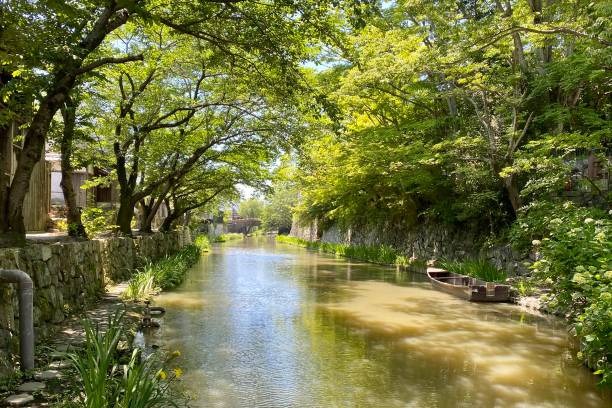A visit to one of the most beautiful historic towns in Shiga Prefecture offers a glimpse into traditional Japan, with its well-preserved architecture, scenic waterways, and cultural landmarks. For first-time travelers, understanding the logistics, layout, and local customs can enhance the experience significantly, which offers a more immersive and rewarding journey into the region’s heritage. The following guide outlines essential considerations to keep in mind before arrival.
Proximity to Kyoto and Travel Planning
Omihachiman lies just a short train ride from Kyoto, making it an accessible option for those exploring central Japan. Visitors should factor in travel time when planning their itinerary, especially if they plan to combine this location with stops in nearby cities. Trains run frequently from major hubs, allowing flexibility in scheduling.
Access from Tokyo via Shinkansen and Local Trains
For long-distance travelers arriving from Tokyo, reaching the town involves a combination of high-speed and local rail services. A Shinkansen ride to Kyoto or Osaka is typically followed by a regional train transfer. Understanding the rail connections and timetable options helps streamline the journey and avoid unnecessary delays.
Walking or Busing Within the Town
The town center is compact and largely walkable, particularly around the main canal and historic districts. However, for those planning to explore attractions further afield, such as the surrounding hills or seasonal viewpoints, public transportation offers a convenient alternative. Buses operate on predictable routes, though schedules should be reviewed in advance.
Best Time to Visit for Scenic Beauty
Seasonal variations influence the appeal of outdoor spaces and sightseeing opportunities. Spring brings cherry blossoms along the canals, while autumn paints the surrounding mountains in vivid hues. Summer months can be warm and humid, and winter may bring light snowfall that enhances the old-town atmosphere. Choosing the right season can significantly impact both comfort and visual experience.
Understanding the Riverside District Layout
The town’s charm is closely tied to its waterway, which runs through the heart of the historic area. This feature provides picturesque views and serves as a navigational reference point for visitors. Major temples, shops, and museums are all clustered near the banks, making a riverside stroll a natural starting point for exploration.
Cultural Etiquette and Local Customs
Respecting Japanese traditions and social norms contributes to a respectful and enjoyable visit. Simple gestures, such as removing shoes where required, speaking quietly in public spaces, and properly disposing of waste, are appreciated by residents. Familiarity with these practices ensures smoother interactions and a more immersive experience.
Overview of Key Attractions and Time Needed
Several notable sites anchor the visitor’s itinerary, including historic homes, shrines, and a preserved merchant quarter. While a single day allows for a general overview, a longer stay permits deeper engagement with the surroundings. Prioritizing must-see spots and allocating sufficient time per location prevents rushed sightseeing.
How Expert Travel Blogs Can Enhance Your Visit
Independent travel resources often offer detailed insights that go beyond standard guides. These platforms may include lesser-known walking routes, dining recommendations, and seasonal event listings tailored to this specific destination. Reviewing multiple perspectives can help form a well-rounded plan and uncover hidden gems.
Preparation plays a key role in appreciating all that Omihachiman has to offer. From transportation logistics to cultural awareness, being informed ahead of time leads to a more seamless and enriching visit. By considering these essential points, first-time travelers can make the most of their time in this distinctive town. A well-planned visit allows for a deeper appreciation of the town’s unique blend of history, culture, and natural beauty.


